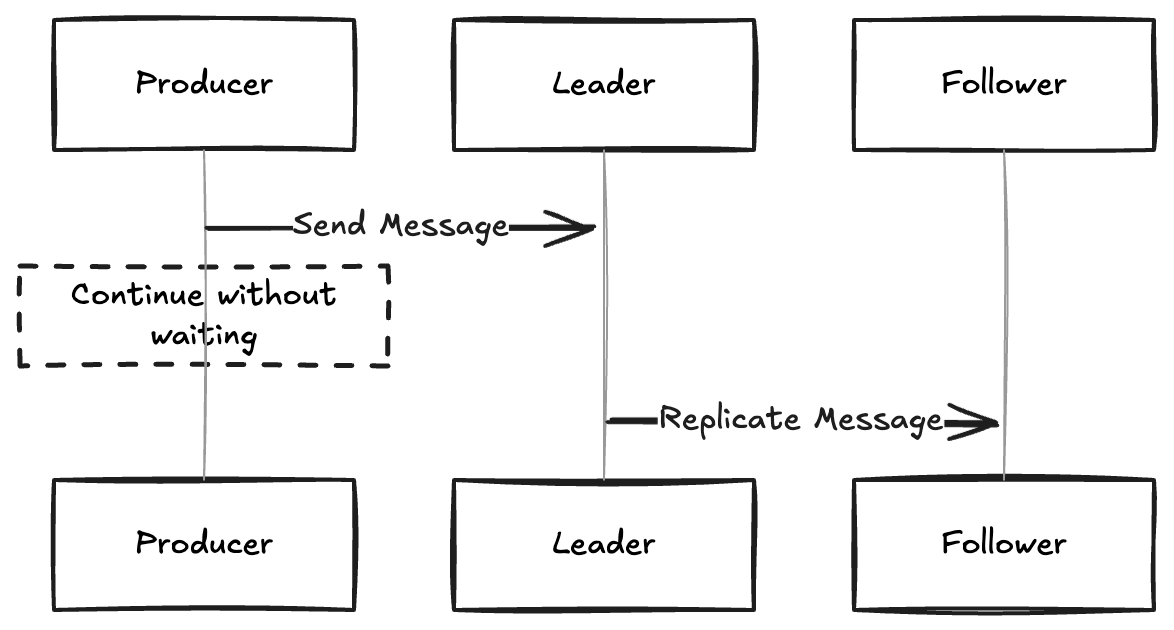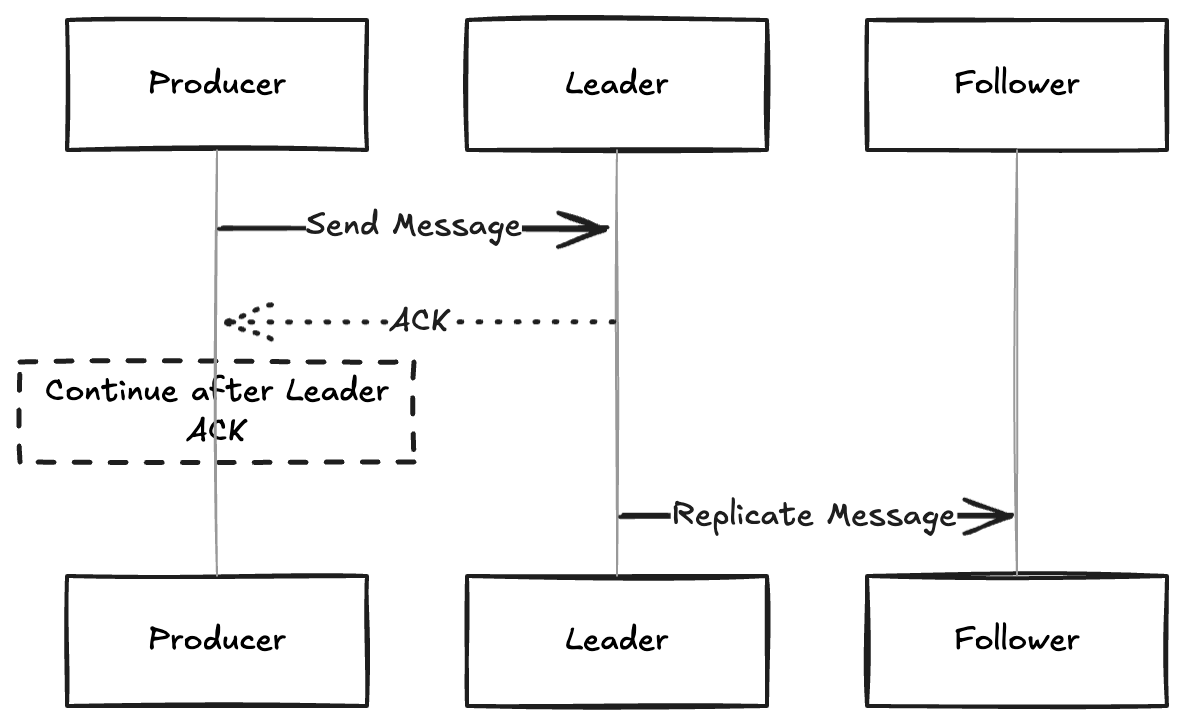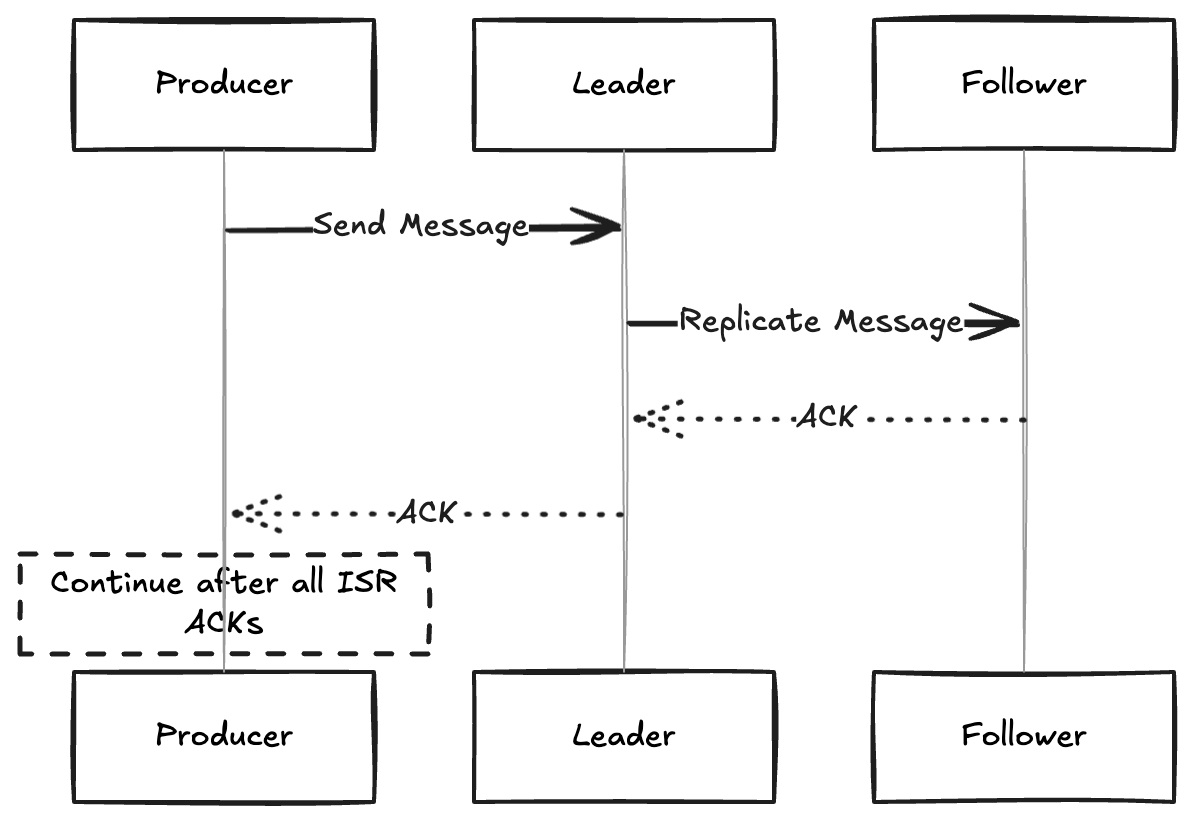How Does Kafka's ACK Mechanism Work?
Kafka
Message Queue
Reliability
Distributed Systems
What is the ACK Mechanism?
Think of Kafka's ACK (acknowledgment) mechanism as a delivery receipt system. When a producer sends a message, it can wait for confirmation that the message was received - just like tracking a package delivery. This helps ensure messages aren't lost in transit.
Three ACK Levels
Kafka offers three ACK levels, each striking a different balance between reliability and speed. Let's look at each one:
1. acks=0 (No Acknowledgment)

Characteristics:
- Fire-and-forget: Send and move on
- Lightning-fast throughput
- Messages might get lost
- Best for metrics or logs where losing a few data points is okay
2. acks=1 (Leader Acknowledgment)

Characteristics:
- Waits for the leader's confirmation
- Decent speed with basic reliability
- Some risk if the leader crashes
- Good for most everyday use cases
3. acks=-1 or all (All Acknowledgments)

Characteristics:
- Waits for all replicas to confirm
- Slower but bulletproof
- Maximum reliability
- Perfect for financial transactions
Configuration Example
Producer Configuration
# ACK level setting
acks=all # or acks=0, acks=1
ACK Level Comparison and Use Cases
| Feature | acks=0 | acks=1 | acks=all |
|---|---|---|---|
| Message Reliability | Low | Medium | High |
| Response Latency | Lowest | Medium | Highest |
| Throughput | Highest | Medium | Lowest |
| Message Loss Risk | Can lose messages | Only loses if leader fails | Won't lose messages |
| Use Cases | Metrics & Logging Performance monitoring | Regular updates Analytics streams | Payments Critical data |
| CPU Overhead | Lowest | Medium | Highest |
| Network Overhead | Lowest | Medium | Highest |
Summary
Pick your ACK level based on what matters most: speed or reliability. For critical data, use acks=all. For metrics and logs where speed is key, acks=0 might be your best bet. Most applications do fine with acks=1, which hits the sweet spot between reliability and performance.
Related Topics: